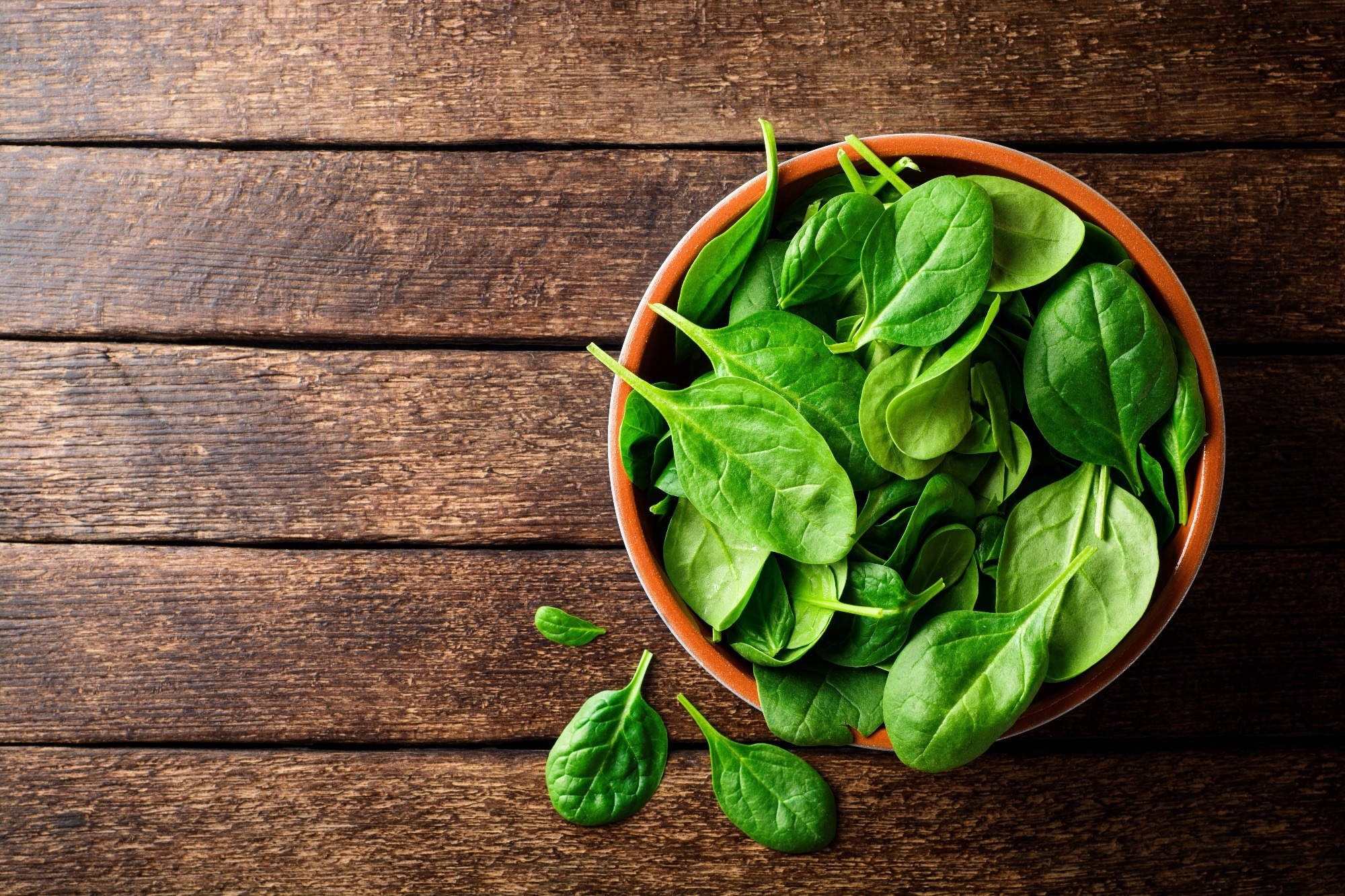A recent Scientific Reports study evaluated the effect of spinach extract on wound healing in diabetic rats.
 Study: Accelerated wound healing induced by spinach extract in experimental model diabetic rats with streptozotocin. Image Credit: nesavinov/Shutterstock.com
Study: Accelerated wound healing induced by spinach extract in experimental model diabetic rats with streptozotocin. Image Credit: nesavinov/Shutterstock.com
Background
Diabetes has been associated with many severe long-term complications, for example, chronic diabetic ulcer (CDU), which lasts for many months or even years. Several crucial factors linked to impaired wound healing have been identified, including diabetic neuropathy, skin damage, infections, ischemia, poor nutritional status, and inadequate control of diabetes.
Lower extremity CDU is considered a major health threat and social burden in both developed and developing countries. Typically, lower extremity CDU is hard to heal and it often requires foot or leg amputation in diabetic patients. The global prevalence of CDU has been estimated to be 6.3%.
Proper wound healing occurs in four stages: coagulation, inflammation, proliferation, and remodeling. Due to the damage in the blood vessel, a wound gets hypoxic instantaneously.
At the wound site, inflammatory and cutaneous cells are summoned causing accumulation of cytokine and cutaneous cells. Wound contracture initiates after the inflammatory phase.
Fibroblasts, myofibroblasts, and capillary sprouts reach the injury site and collagen deposition begins. Subsequently, epithelial cells are generated to cover the wound and produce keratin.
Spinach is a versatile plant which has a high nutritional value. It can be consumed raw or cooked. Spinach contains 91.4% water, 2.9% protein, 3.6% carbohydrate, and 0.4% fat. Furthermore, it contains fiber, high levels of minerals, particularly, iron, magnesium, and potassium, and vitamins E, C, folate, and A.
It is also a good source of antioxidant ingredients, such as phenols, flavonoids, lycopene, lutein, and linolenic acid. Aqueous extract of spinach also contains thylakoid and various types of amino acids. In contrast to aqueous extract, the alcoholic extract of spinach contains glutamine which plays a vital role in inflammation reduction and wound healing.
Glutamine decreases the activity of the c-Jun N-terminal Kinase (JNK) and IκB kinase subunit β (IKKβ). It also reduces insulin resistance, interleukin-6 (IL-6), and tumor necrosis factor α (TNFα). A recent study has indicated that glutamine not only improves insulin signaling but also indirectly enhances collagen synthesis by increasing transcription levels. Previous studies have also indicated that spinach possesses anti-inflammatory, antidiabetic, anti-proliferative, and anti-obesity properties.
About the study
The current study investigated the effect of spinach extract on diabetic wound healing. Aqueous and alcoholic spinach extract was prepared following standard protocol in the pharmacology department at Shahid Beheshti University of Medical Sciences, Tehran, Iran.
A total of seventy-two male Sprague–Dawley rats of eight weeks of age, were randomized into six groups (Group A-F). These rats were fed with standard rat chow.
In Group A, diabetic rats were given 300 mg/kg of normal saline by gavage for a month. In Group B, non-diabetic rats were given a similar diet to that of group A for the same length of time. In Group C, diabetic rats were given an aquatic extract of 300 mg/kg Spinacia oleracea by gavage for a month.
In Group D, diabetic rates were given an alcoholic extract of Spinacia oleracea of similar quantity to other groups. The group E healthy rats were given 300 mg/kg S oleracea aquatic extract for a month and were then exposed to diabetes.
Subsequently, these rats were subjected to 300 mg/ kg S oleracea aquatic extract for a month after ulcer induction. Finally, the group F healthy rats received 300 mg/kg S oleracea alcoholic extract for a month and were then exposed to diabetes. After ulcer induction, these rats received 300 mg/kg of S oleracea alcoholic extract for a month.
This study measured ulcer regeneration, blood sugar, vascular endothelium growth factor, and weight changes on days 3, 7, 14, 21, and 30.
Study findings
The current study revealed that wound healing occurred on the fourteenth day in preventive groups, i.e., E and F. The healing process was observed on the thirtieth day in the diabetic control group and the twenty-first day in the healthy control group.
Compared to other groups, a greater recovery rate was observed in groups who received spinach extract (aqueous and alcoholic) prior to the induction of diabetic ulcer.
These findings were attributed to the presence of vitamins, which assist the healing process through fibroblast collagen deposition and triggering epithelialization. Vitamin C also increases the collagen, fibroblasts, and vascular density level in the wounds.
Other vitamins, such as vitamins K and E, are involved with wound healing in different capacities. Other phytochemical compounds in spinach extract also synergistically play a vital role in wound healing.
The mean blood glucose levels in the preventive groups dropped substantially to the non-diabetic range. This lowering of blood glucose began on the fourteenth day. Significant weight changes in diabetic rats were observed on day twenty-one.
Conclusions
The current study's findings indicated that the aqueous and alcoholic extracts of spinach can accelerate wound healing time in diabetic rats. It also improved blood glucose and weight loss due to diabetes. S oleracea could be used to effectively treat chronic diabetic ulcers.